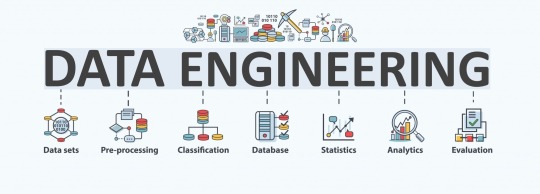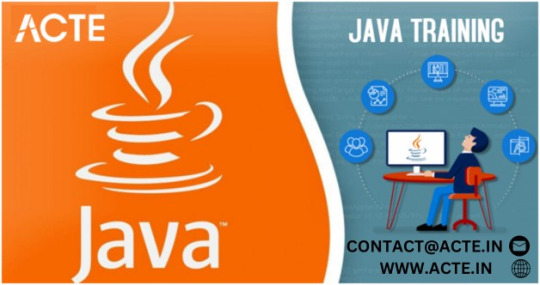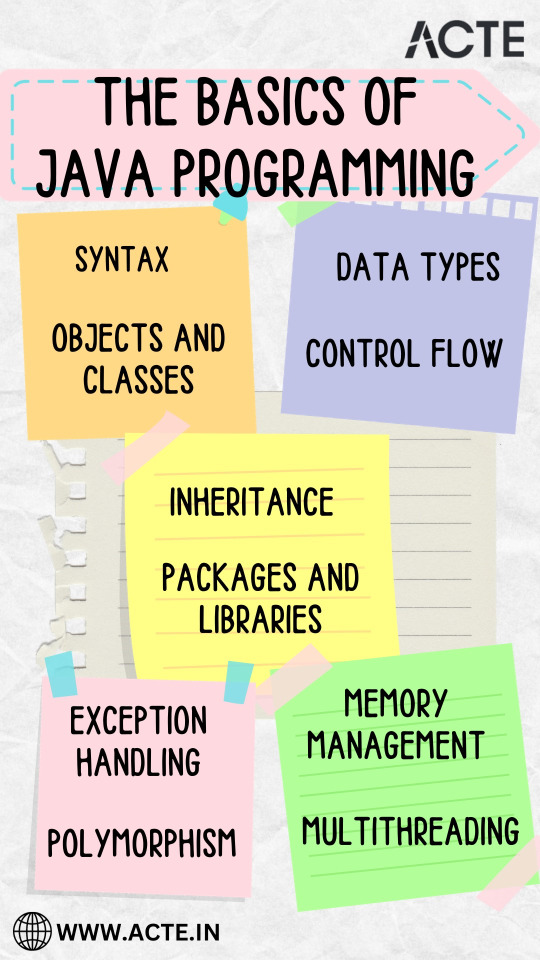#java runtime efficiency
Explore tagged Tumblr posts
Text
Java Runtime Efficiency: Ahead-of-Time (AOT) Compilation with Project Leyden OpenJdk
Estimated reading time: 5 minutes Introduction: The Cold Start Problem in Modern Java Java has long been celebrated for its runtime performance thanks to Just-In-Time (JIT) compilation. However, in the era of containerization, serverless functions, and microservices, slow startup and warm-up times have become significant drawbacks. In response, the Java community is increasingly adopting…
#Ahead of Time Cache#Ahead of Time Compilation#Ahead of Time Computation#Ahead-of-Time compilation in Java#AOT#AOT Java#GraalVM native image#insidejava#Java#java 24#java 25#Java performance optimization#java runtime efficiency#java24#java25#jdk24#jdk25#openjdk#project leyden#runtime efficiency
0 notes
Text
Best IT Courses In Bhubaneswar:- seeree services pvt ltd.
Introduction:- seeree is one of the best IT training institute and Software industry, features completely Industrial training on Python , PHP , .NET , C Programming,Java , IOT , AI , GD PI , ORACLE and ALL CERTIFICATION COURSES as well as provides seminar,cultural activity and jobs
Courses we provided:- 1) Java Fullstack 2) Python Fullstack 3) PHP Fullstack 4) Preplacement Training & Sp. Eng 5) .NET Fulstack 6) SEO/Digital Marketing 7) SAP 8) MERN 9) Software Testing 10)Data Analyst 11)Data Science 12)Data Engineering 13)PGDCA 14)Tally 15)Graphics Design
Course1:- Java Fullstack

A Class in Java is where we teach objects how to behave. Education at seeree means way to success. The way of teaching by corporate trainers will bloom your career. We have the best java training classes in Bhubaneswar. 100% Placement Support. Job Support Post Training. This course will give you a firm foundation in Java, commonly used programming language. Java technology is wide used currently. Java is a programming language and it is a platform. Hardware or software environment in which a program runs, known as a platform. Since Java has its own Runtime Environment (JRE) and API, it is called platform. Java programming language is designed to meet the challenges of application development in the context of heterogeneous, network-wide distributed environment. Java is an object-oriented programming (OOP) language that uses many common elements from other OOP languages, such as C++. Java is a complete platform for software development. Java is suitable for enterprise large scale applications.]
Course2:- Python Fullstack

Seeree offers best python course in Bhubaneswar with 100% job assurance and low fee. Learn from real time corporate trainers and experienced faculties. Groom your personality with our faculty. Seeree helps to build confidence in students to give exposure to their skills to the company.
Python is dynamically typed , compiled and interpreted , procedural and object oriented , generalized , general-purpose , platform independent programming language. Python is a high-level, structured, open-source programming language that can be used for a wide variety of programming tasks.
Course3:- PHP Fullstack

seeree is the best training institute which provide PHP Training courses in bhubaneswar and all over odisha We aim the students to learn and grow altogether with the need of IT firms.
PHP is a server scripting language, and a powerful tool for making dynamic and interactive Web pages. PHP is a widely-used, free, and efficient alternative to competitors such as Microsoft's ASP.
Course4:- Preplacement Training & Sp. Eng

Welcome to SEEREE Institute, where excellence meets opportunity. At SEEREE, we are dedicated to providing a transformative learning experience that empowers students to achieve their goals and contribute to a brighter future.
Our institute offers cutting-edge courses designed to meet the needs of the ever-evolving global landscape. With a team of highly qualified instructors and state-of-the-art facilities, we ensure a supportive and inspiring environment for learning and growth.
Whether you're here to develop new skills, explore innovative fields, or pursue personal and professional success, SEEREE Institute is the perfect place to begin your journey. Thank you for choosing us, and we look forward to being a part of your success story.
Course5:- .NET Fullstack

Seeree offers best .NET course in Bhubaneswar with 100% job assurance and low fee. Learn from real time corporate trainers and experienced faculties. Groom your personality with our faculty. Seeree helps to build confidence in students to give exposure to their skills to the company.
Course6:- SEO/Digital Marketing

In today's fast-paced digital world, businesses thrive on visibility, engagement, and strategic online presence. At SEEREE, we empower you with the skills and knowledge to master the art of Search Engine Optimization (SEO) and Digital Marketing.
Our comprehensive program is designed for beginners and professionals alike, covering everything from keyword research, on-page and off-page SEO, and content marketing, to social media strategies, PPC campaigns, and analytics.
With hands-on training, real-world projects, and guidance from industry experts, we ensure you're equipped to drive measurable results and excel in this dynamic field.
Join us at SEEREE Institute and take the first step towards becoming a leader in the digital marketing landscape!"
Course7:- SAP

SAP refers to Systems, Applications, and Products in Data Processing. Some of the most common subjects covered in these courses include human resource software administration, database management, and business training. Obtaining SAP certification can be done on a stand-alone basis or as part of a degree program.
Course8:- MERN

Seeree offers the best MERN course in Bhubaneswar with 100% job assurance and low fees. Learn from real-time corporate trainers and experienced faculty. Seeree helps students build confidence and gain skills to excel in company roles.
Are you ready to step into the exciting world of web development? At SEEREE, we bring you a comprehensive MERN Stack course that equips you with the skills to build modern, dynamic, and responsive web applications from start to finish.
The MERN Stack—comprising MongoDB, Express.js, React.js, and Node.js—is one of the most sought-after technologies in the web development industry. Our program is designed to help you master each component of the stack, from creating robust backends and managing databases to crafting dynamic frontends and seamless APIs.
Course9:- Software Testing

Seeree offers best Testing course in Bhubaneswar with 100% job assurance and low fee. Learn from real time corporate trainers and experienced faculties. Groom your personality with our faculty. Seeree helps to build confidence in students to give exposure to their skills to the company.
In the fast-paced world of software development, ensuring the quality and reliability of applications is crucial. At SEEREE, we offer a comprehensive Software Testing course designed to equip you with the skills and techniques needed to excel in this essential field.
Our program covers all aspects of software testing, from manual testing fundamentals to advanced automation tools and frameworks like Selenium, JIRA, and TestNG. You’ll learn to identify bugs, write test cases, execute test scripts, and ensure software meets high-quality standards.
With hands-on training, real-world scenarios, and guidance from experienced industry professionals, you’ll be prepared to take on roles like Quality Assurance Engineer, Test Analyst, and Automation Tester.
Join SEEREE Institute and gain the expertise to become a key player in delivering flawless software solutions. Your journey to a rewarding career in software testing starts here!"
Course10:- Data Analyst

Seeree offers the best Data Analyst course in Bhubaneswar with 100% job assurance and affordable fees. Our comprehensive curriculum is designed to cover all aspects of data analysis, from data collection and cleaning to advanced data visualization techniques. Learn from real-time corporate trainers and experienced faculty members who bring industry insights into the classroom. Enhance your analytical skills and boost your career prospects with hands-on projects and real-world case studies. Our faculty also focuses on grooming your personality and soft skills, ensuring you are well-prepared for interviews and workplace environments. Seeree is dedicated to building confidence in students, providing them with the necessary exposure to showcase their skills to top companies in the industry.
Course11:- Data Science

Seeree offers the best Data Science course in Bhubaneswar with 100% job assurance and affordable fees. Our comprehensive curriculum is designed to cover all aspects of data science, from data collection and cleaning to advanced data visualization techniques. Learn from real-time corporate trainers and experienced faculty members who bring industry insights into the classroom. Enhance your analytical skills and boost your career prospects with hands-on projects and real-world case studies. Our faculty also focuses on grooming your personality and soft skills, ensuring you are well-prepared for interviews and workplace environments. Seeree is dedicated to building confidence in students, providing them with the necessary exposure to showcase their skills to top companies in the industry.
Course12:- Data Engineering

In the era of big data, the ability to design, build, and manage scalable data infrastructure is one of the most in-demand skills in the tech industry. At SEEREE, we are proud to offer a comprehensive Data Engineering course that prepares you for a career at the forefront of data-driven innovation.
Our program covers essential topics such as data modeling, ETL processes, data warehousing, cloud platforms, and tools like Apache Spark, Kafka, and Hadoop. You’ll learn how to collect, organize, and transform raw data into actionable insights, enabling businesses to make smarter decisions.
With real-world projects, expert mentorship, and hands-on experience with the latest technologies, we ensure that you are industry-ready. Whether you’re starting fresh or upskilling, this program will empower you to unlock opportunities in the rapidly growing field of data engineering.
Join SEEREE Institute and take the first step toward building the data pipelines that power tomorrow’s technology!"
Course13:- PGDCA

Seeree offers the best MERN course in Bhubaneswar with 100% job assurance and low fees. Learn from real-time corporate trainers and experienced faculty. Seeree helps students build confidence and gain skills to excel in company roles.
In today’s digital age, computer applications are at the heart of every industry, driving innovation and efficiency. At SEEREE Institute, our Post Graduate Diploma in Computer Applications (PGDCA) program is designed to provide you with in-depth knowledge and hands-on skills to excel in the IT world.
This program offers a comprehensive curriculum covering programming languages, database management, web development, software engineering, networking, and more. Whether you aim to enhance your technical expertise or step into a rewarding career in IT, PGDCA at SEEREE equips you with the tools to succeed.
With expert faculty, state-of-the-art labs, and real-world projects, we ensure that you gain practical experience and a strong theoretical foundation. By the end of the program, you’ll be prepared for roles such as software developer, system analyst, IT manager, or database administrator.
Course14:- Tally

Seeree offers the best Tally course in Bhubaneswar with 100% job assurance and low fees. Learn from real-time corporate trainers and experienced faculty. Seeree helps students build confidence and gain skills to excel in company roles.
In today’s business world, efficient financial management is key to success, and Tally is one of the most trusted tools for accounting and financial operations. At SEEREE Institute, we offer a comprehensive Tally course designed to equip you with the skills needed to manage business finances effortlessly.
Our program covers everything from the basics of accounting and bookkeeping to advanced features like GST compliance, inventory management, payroll processing, and generating financial reports. With hands-on training and real-world applications, you’ll gain practical expertise in using Tally effectively for businesses of any scale.
Whether you're a student, a professional, or a business owner, our Tally program is tailored to meet your needs and enhance your career prospects in the fields of accounting and finance.
Course15:- Graphics Design

In the world of creativity and communication, graphic design plays a vital role in bringing ideas to life. At SEEREE Institute, our Graphic Design course is tailored to help you unlock your creative potential and master the art of visual storytelling.
Our program covers a wide range of topics, including design principles, color theory, typography, branding, and user interface design. You’ll gain hands-on experience with industry-standard tools like Adobe Photoshop, Illustrator, and InDesign, enabling you to create stunning visuals for print, digital media, and beyond.
Whether you're an aspiring designer or a professional looking to sharpen your skills, our expert trainers and real-world projects will provide you with the knowledge and confidence to excel in this competitive field.
Join SEEREE Institute and start your journey toward becoming a skilled graphic designer. Let’s design your future together!"
2 notes
·
View notes
Text
Mastering the Basics of Java: Your Gateway to Software Development
In the ever-evolving landscape of programming, Java stands as a versatile and widely-adopted language that has consistently been the preferred choice of developers worldwide. Whether you are a newcomer taking your first steps into the world of programming or an experienced developer seeking to broaden your skillset, acquiring a profound understanding of Java's fundamentals is an essential stride forward. In this comprehensive and meticulously crafted guide, we embark on a journey to delve deep into the core concepts of Java programming. This knowledge will not only serve as a strong foundation but also empower you to navigate the dynamic and ever-evolving domain of software development with confidence.

Java's popularity has endured for decades, and it shows no signs of slowing down. Its ability to adapt to the ever-shifting demands of the software industry, coupled with its cross-platform compatibility, has made it a mainstay for both beginners and seasoned professionals. Whether you aspire to develop web applications, mobile apps, or enterprise-grade software solutions, Java offers a versatile platform to turn your coding dreams into reality.
1. Syntax: The Building Blocks of Java
Java's syntax is often praised for its readability and similarity to other programming languages like C++ and C#. This makes it relatively easy to learn, especially if you have experience with these languages. The key feature of Java's syntax is the use of curly braces {} to define blocks of code. These braces play a fundamental role in structuring Java programs, making it essential to grasp their usage.
2. Objects and Classes: Embracing Object-Oriented Programming (OOP)
Java is an object-oriented programming (OOP) language, which means it revolves around the concepts of objects and classes. In Java, everything is treated as an object, and classes serve as blueprints for creating these objects. A class defines both the properties (fields) and behaviors (methods) of an object. Understanding the principles of OOP is vital for building well-structured and modular Java applications.
3. Data Types: The Foundation of Variables and Data Manipulation
Java supports a variety of data types, categorized into primitive data types (e.g., int, double, char) and reference data types (e.g., objects, arrays). Primitive data types represent basic values, while reference data types refer to objects created from classes. Grasping these data types is essential for declaring variables and manipulating data in your Java programs.
4. Control Flow: Directing the Flow of Your Program
Java provides an array of control flow statements that dictate the execution flow of your program. These include conditional statements (such as if-else and switch), looping statements (including for, while, and do-while), and branching statements (like break, continue, and return). Mastery of these control flow structures is crucial for creating efficient and logic-driven Java applications.
5. Inheritance: Building on Existing Foundations
Inheritance is a core concept in Java that enables you to create new classes based on existing ones. By inheriting the properties and behaviors of a parent class, you can promote code reusability and establish a more organized code structure. Inheritance is a powerful tool for designing extensible and scalable Java applications.
6. Polymorphism: Achieving Flexibility and Extensibility
Polymorphism is another hallmark of Java's object-oriented approach. It enables objects of various classes to be handled as though they were members of a single superclass. This flexibility in code design allows you to create more versatile and extensible applications. Understanding polymorphism is essential for leveraging the full potential of Java's object-oriented capabilities.
7. Exception Handling: Managing Errors Gracefully
Java boasts a robust exception-handling mechanism to deal with runtime errors. By using try-catch blocks, you can gracefully handle exceptions, ensuring that your program doesn't crash unexpectedly. Effective exception handling is a key aspect of writing robust and reliable Java code.
8. Packages and Libraries: Harnessing the Power of Java's Ecosystem
Java offers a vast standard library known as the Java Standard Library or Java API. Additionally, it allows you to organize your code into packages for better organization and modularity. Leveraging these packages and libraries is essential for streamlining your development process and tapping into a wealth of pre-built functionality.
9. Memory Management: The Art of Garbage Collection
Java employs a unique feature called garbage collection to automatically manage memory. This process helps prevent memory leaks and ensures efficient memory usage in your Java applications. Understanding how garbage collection works is crucial for maintaining the performance and stability of your programs.
10. Multithreading: Building Responsive and Scalable Applications
Java's support for multithreading allows you to execute multiple threads concurrently. Threads are smaller units of a process that can run independently, making it possible to build responsive and scalable applications. Mastering multithreading is essential for developing high-performance Java software, particularly in today's world of parallel computing.

Learning Java opens doors to a wide range of career opportunities in software development and information technology. Whether you're interested in building web applications, mobile apps, or enterprise solutions, Java's versatility makes it a valuable skill.
If you're looking to embark on your Java programming journey or enhance your existing skills, consider exploring courses and training programs offered by reputable institutions like ACTE Technologies. They provide comprehensive learning experiences and expert guidance to help you master Java and advance your career in this exciting field.
In conclusion, Java's robust features and wide-ranging applications make it a compelling choice for developers worldwide. By mastering its fundamental concepts and continuously expanding your knowledge, you'll be well-prepared to tackle complex projects and contribute to the ever-evolving world of software development. Good luck with your Java programming efforts!
8 notes
·
View notes
Text
Java in Software Development: A Timeless Language for Modern Solutions
Java has stood the test of time as one of the most popular and reliable programming languages in the software development world. From mobile apps to large-scale enterprise systems, Java powers countless digital solutions across the globe. Its platform independence, robust security features, and vast ecosystem have made it a top choice for developers for more than two decades.
What is Java?
Java is a high-level, object-oriented programming language developed by Sun Microsystems in the mid-1990s. It follows the “Write Once, Run Anywhere (WORA)” philosophy, meaning that code written in Java can run on any device equipped with the Java Virtual Machine (JVM), regardless of the underlying operating system.
Java’s syntax is clean, its structure is logical, and it borrows many ideas from C++, making it relatively easy to learn yet powerful enough for complex projects.
Why Java Still Matters in 2025
Despite the emergence of newer languages like Kotlin, Python, and Go, Java remains widely used for several compelling reasons:
1. Platform Independence
Java’s core strength lies in its platform independence. A compiled Java program can run on any device with a JVM, which includes everything from desktops to smartphones, embedded devices, and servers.
This portability makes Java an excellent choice for cross-platform development and enterprise applications.
2. Robust and Secure
Security is a top priority in software development, and Java is known for its strong security features. It offers a secure runtime environment, access control, and built-in protection against common vulnerabilities like buffer overflows.
Java’s robust memory management and automatic garbage collection also contribute to its stability and efficiency.
3. Rich API and Libraries
Java has a massive standard library (Java API) and a vast array of open-source libraries and frameworks. Whether you're building a web application, a game, or a machine learning tool, Java likely has a framework or toolset to support your work—Spring, Hibernate, Apache libraries, and JavaFX are just a few examples.
4. Community and Support
With millions of developers worldwide, Java has one of the largest and most active programming communities. This means continuous updates, widespread documentation, and countless tutorials that make problem-solving easier for both beginners and experienced professionals.
5. Enterprise Adoption
Many Fortune 500 companies and global enterprises continue to rely on Java for backend systems, banking software, e-commerce platforms, and more. The stability and scalability of Java make it a favorite for mission-critical applications.
Common Uses of Java in Software Development
Let’s take a look at some areas where Java continues to thrive:
1. Web Applications
Java is widely used in building dynamic web applications. Frameworks like Spring and JavaServer Faces (JSF) enable developers to create secure and scalable applications efficiently. Large websites and services like LinkedIn, Amazon, and eBay have backend systems partly powered by Java.
2. Android App Development
Java was the original language used for Android app development, and although Kotlin is now the preferred choice by Google, Java is still heavily used in the Android ecosystem. Most Android libraries are compatible with Java, and a significant portion of apps are still developed in or maintained with Java.
3. Enterprise Software
From banking to insurance to government sectors, Java is the backbone of many enterprise software systems. Technologies like Java EE (Enterprise Edition) provide the tools needed to build high-performance, distributed, and transaction-based applications.
4. Scientific Applications
Java’s precision, portability, and performance make it a good candidate for scientific applications. Its built-in mathematical and statistical capabilities are suitable for complex simulations and data analysis.
5. Big Data and Cloud Computing
Java plays a crucial role in the Big Data ecosystem. Tools like Hadoop and Apache Spark support Java, enabling developers to process massive amounts of data efficiently. Additionally, many cloud computing platforms like AWS and Google Cloud offer SDKs and tools for Java.
Learning Java in Today’s World
For those aspiring to enter the tech industry, learning Java is a smart move. It provides a strong foundation in object-oriented programming and helps you understand core programming concepts that are transferable to other languages.
The Future of Java
Java continues to evolve with each new release, improving performance, adding modern language features, and simplifying syntax. Features introduced in recent versions, like records, sealed classes, and pattern matching, show that Java is adapting to modern development trends.
As enterprises move toward cloud-native architectures, microservices, and DevOps, Java frameworks like Spring Boot and Jakarta EE are helping developers build faster, lighter, and more modular applications.
Conclusion
Java remains a powerful and versatile programming language with unmatched legacy and continued innovation. Whether you’re a student just starting out, a developer aiming to work in enterprise environments, or a tech enthusiast exploring mobile or web apps, Java offers tools and capabilities to support your goals.
In the ever-changing world of software development, Java proves that a well-designed language can continue to lead and inspire, even decades after its creation.
0 notes
Text
Coding Brushup: Java Exception Handling Best Practices
In this coding brushup session, we focus on one of the most critical aspects of writing reliable and robust Java applications — Java exception handling. Exception handling in Java is not just about catching errors; it’s about managing program flow, providing meaningful feedback, and ensuring your application remains stable and maintainable under unexpected conditions. This article outlines the most effective Java best practices course for handling exceptions, ensuring your skills are current and refined.

Why Exception Handling Matters in Java
Java exception handling is a mechanism that allows developers to manage runtime errors in a graceful and predictable manner. Rather than crashing the application or producing undesired output, exceptions help developers identify problems, apply fixes, and even recover from faults during execution.
As part of any serious coding brushup, understanding Java best practices in exception handling is essential for writing quality, production-ready code. Exception handling not only improves the robustness of the program but also enhances readability, maintainability, and debugging efficiency.
1. Always Catch Specific Exceptions
A fundamental rule in Java exception handling best practices is to catch the most specific exception possible. Catching generic exceptions such as Exception or Throwable should be avoided unless absolutely necessary. Specific exceptions provide more control and clarity over error management.
Catching only relevant exceptions ensures that you’re not inadvertently masking programming errors or swallowing unrelated problems. This promotes more accurate exception tracking and error resolution, which is a core component of professional Java development.
2. Never Swallow Exceptions Silently
One of the most common anti-patterns in Java exception handling is swallowing exceptions without any feedback. Empty catch blocks suppress errors silently, making it difficult to trace and debug problems when they arise. In a good Java coding brushup, it’s vital to emphasize that every caught exception must be logged, re-thrown, or otherwise acknowledged.
Swallowing exceptions hides potential issues and breaks the natural flow of Java best practices. Even when you choose not to halt the application, logging the exception is a must for long-term code health.
3. Use Finally Blocks for Cleanup
The finally block is a staple in Java exception handling. It guarantees that a particular section of code will execute, regardless of whether an exception is thrown or not. This is particularly useful for cleaning up resources like file handles, sockets, and database connections.
Using finally correctly ensures your application does not suffer from resource leaks or dangling operations. This is a vital point in any coding brushup since failing to clean up properly can lead to memory bloat or degraded system performance.
4. Prefer Try-With-Resources for Auto-Closeable Resources
Since Java 7, the try-with-resources statement is the recommended approach to handling resource management. This feature simplifies code and automatically closes resources that implement the AutoCloseable interface.
Using try-with-resources eliminates the need for verbose finally blocks and helps reduce boilerplate code, aligning with modern Java best practices. It’s an essential part of updating your skills in any Java coding brushup session.
5. Create Custom Exceptions Where Necessary
In many scenarios, predefined Java exceptions may not clearly describe the domain-specific problem your application is encountering. In such cases, it is a Java best practice to create custom exception classes.
Custom exceptions improve the semantic clarity of your code and allow for cleaner exception hierarchies. During a coding brushup, it’s crucial to learn how to define and use custom exceptions effectively to make your application self-documenting and easier to debug.
6. Log Exceptions with Proper Detail
Logging exceptions is a key practice in professional Java development. It’s not enough to print stack traces to the console; structured logging using tools like Log4j or SLF4J is far more effective.
Logs should include the exception type, message, and ideally, the stack trace. This level of detail ensures that you can trace the origin of errors and monitor system behavior efficiently. Logging is a routine yet vital aspect of any Java coding brushup, especially for those transitioning into production-level code.
7. Avoid Using Exceptions for Flow Control
Exceptions are meant to handle abnormal conditions, not for standard control flow. Using exceptions to implement conditional logic is an anti-pattern and violates Java best practices.
This approach not only reduces performance due to the overhead of exception handling but also makes code harder to understand. Instead, validate input and use regular control structures for predictable logic. This is a critical distinction in any thorough Java exception handling brushup.
8. Document Exceptions Clearly
Every method that throws exceptions should document them properly using Javadoc comments. This helps other developers understand what exceptions they might need to handle when calling your method.
This practice aligns with writing self-explanatory code and contributes to better collaboration in team environments. Any seasoned coding brushup will stress the importance of documenting thrown exceptions, especially in public APIs or library code.
9. Use Exception Chaining for Better Context
Exception chaining allows developers to pass the original exception to a new exception when rethrowing. This helps preserve the original error stack and provides additional context, which is essential for effective debugging.
Following this practice enables more meaningful and layered error messages, supporting a more holistic understanding of problems during runtime. This nuanced technique is an advanced topic often emphasized in senior-level Java coding brushup sessions.
10. Rethrow Only When Needed
Sometimes, you may need to rethrow an exception after logging or wrapping it. It’s important to do so judiciously, ensuring you’re not duplicating logs or losing stack trace information.
Blindly rethrowing exceptions can clutter logs and confuse the root cause of issues. Instead, when rethrowing, ensure that the context of the exception is either preserved or enhanced. This habit aligns closely with Java best practices and is a mark of mature exception handling.
Conclusion
Exception handling is more than just writing try-catch blocks — it’s about writing intelligent, predictable, and resilient code. In this coding brushup on Java exception handling best practices, we’ve covered essential concepts such as catching specific exceptions, avoiding silent failures, logging effectively, and using modern Java features like try-with-resources.
As a Java developer, refining your exception handling strategy will not only reduce bugs but also improve your codebase’s clarity and maintainability. Make these best practices a consistent part of your Java coding brushup routine to elevate your development skills to the next level.
0 notes
Text
These are the 10 most important Java features every developer should be aware of
Start Your Java Journey Right
If you’re searching for the best Java training in Hyderabad, understanding the core features of Java is essential. Java remains one of the most popular programming languages in the world, thanks to its platform independence, security, and scalability. Whether you're a beginner or an experienced developer, mastering its key features is crucial for building efficient and robust applications.
1. Platform Independence
Java’s “Write Once, Run Anywhere” principle allows code to run on any device with a Java Virtual Machine (JVM), making it highly portable.
2. Object-Oriented Programming (OOP)
Java follows OOP principles like inheritance, encapsulation, polymorphism, and abstraction, which help organize and structure code efficiently.
3. Robust and Secure
Java provides strong memory management, exception handling, and a secure runtime environment that minimizes vulnerabilities.
4. Automatic Garbage Collection
Java handles memory management automatically through garbage collection, reducing memory leaks and improving performance.
5. Multithreading
Java supports multithreaded programming, enabling developers to write highly responsive and interactive applications.
6. Rich API
Java offers a comprehensive set of APIs for everything from networking to data structures, simplifying development.
7. High Performance
Thanks to Just-In-Time (JIT) compilers and optimized bytecode, Java delivers impressive performance for both desktop and web applications.
8. Dynamic and Extensible
Java supports dynamic loading of classes and is designed to adapt to evolving development needs.
9. Community Support
For developers, a vast global community ensures constant updates, libraries, and frameworks.
10. Backward Compatibility
Java maintains compatibility with older versions, ensuring that legacy applications remain functional.
Conclusion
To master these features and more, expert guidance makes all the difference. Enroll in SSSIT Computer Education for practical, industry-oriented Java training that will take your coding skills to the next level.
#best java training in hyderabad#best java training in kphb#best java training in kukatpally#best software training institute in hyderabad
0 notes
Text
The Future of Full-Stack Web Development: Trends, Tools, and Technologies to Watch
In the ever-evolving world of tech, few areas have seen as much rapid growth and transformation as full stack web development. What used to be a clear separation between frontend and backend has now turned into a more seamless, hybrid model, where developers are expected to juggle both ends of the spectrum. But where is this all heading?
As we look into the future of full-stack web development, it's clear that exciting changes are on the horizon — from smarter tools and frameworks to revolutionary technologies that promise to redefine how we build for the web. If you're a developer, student, or tech enthusiast, it's time to pay attention.
What is Full Stack Web Development?
Before diving into future trends, let’s briefly revisit what full stack web development really means. A full stack developer works on both:
Frontend (client-side): Everything users interact with — HTML, CSS, JavaScript, and UI frameworks like React or Vue.js.
Backend (server-side): Databases, servers, APIs, and the business logic behind the scenes using technologies like Node.js, Python, Ruby, or Java.
A full stack developer is essentially a digital Swiss Army knife — versatile, adaptable, and always in demand.
Emerging Trends in Full Stack Web Development
Here’s what’s shaping the future:
1. The Rise of Jamstack
Jamstack (JavaScript, APIs, and Markup) is becoming the preferred architecture for faster, more secure, and scalable web applications. Unlike traditional stacks, Jamstack decouples the frontend from the backend, improving performance and simplifying development.
2. AI-Powered Development Tools
Artificial Intelligence is now making its way into code editors and development platforms. Think GitHub Copilot or ChatGPT. These tools assist in writing code, identifying bugs, and even generating entire functions — speeding up the full stack workflow.
Benefits:
Faster coding with AI suggestions
Error prediction and debugging assistance
Smart documentation generation
3. Serverless and Edge Computing
Forget managing traditional servers — serverless architectures and edge computing are becoming the new standard. They allow developers to deploy applications with minimal infrastructure concerns, focusing purely on code and performance.
4. Component-Based Development
Modern frontend frameworks like React, Angular, and Vue are pushing developers towards building reusable components. This modular approach is now extending into the backend too, creating consistent development patterns across the stack.
Tools to Watch in Full Stack Development
To stay relevant, developers must keep their toolkits updated. Here are some must-watch tools shaping the future:
Frontend Tools
React (with Next.js) – For server-side rendering and static generation
Svelte – Lightweight and highly efficient for reactive apps
Tailwind CSS – Utility-first CSS framework for rapid UI development
Backend Tools
Node.js – Continues to dominate with asynchronous performance
Deno – A secure runtime from Node.js’s creator
GraphQL – Replacing REST APIs with a more flexible query language
DevOps & Hosting
Vercel & Netlify – Leading platforms for seamless frontend deployment
Docker & Kubernetes – For containerization and orchestration
Firebase & Supabase – Backend-as-a-service options for fast prototyping
Key Technologies Shaping the Future
Let’s look at the bigger innovations redefining full stack web development:
WebAssembly (WASM): Bringing languages like C++ and Rust to the web browser
Progressive Web Apps (PWAs): Combining web and native app experiences
Blockchain Integration: Decentralized apps (dApps) and smart contract backends
Real-Time Web with WebSockets & MQTT: Enabling live updates and chats
The Human Side of Full Stack Development
Beyond the code and tools, the role of a full stack developer is evolving on a human level too.
Collaborative Skills: Developers must now work more closely with designers, DevOps, and data teams.
Soft Skills Matter: Communication, problem-solving, and adaptability are becoming just as crucial as technical expertise.
Lifelong Learning: With new frameworks emerging almost monthly, continuous learning is a non-negotiable part of the job.
Final Thoughts
Full stack web development is no longer just about knowing a few languages. It’s about understanding entire ecosystems, embracing new paradigms, and building applications that are fast, scalable, and user-centric.
As we look to the future, the lines between frontend and backend will continue to blur, AI will become a coding partner, and developers will be more empowered than ever before. Staying curious, adaptable, and open to learning will be the key to thriving in this dynamic field.
In summary, here’s what to watch for in full stack web development:
Greater automation through AI tools
Continued growth of Jamstack and serverless models
Wider adoption of real-time, decentralized, and modular systems
The rise of multi-disciplinary developer roles
The future is full of possibilities — and if you’re a developer today, you’re right at the center of this exciting evolution.
0 notes
Text
Ultimate Guide to Python Compiler

When diving into the world of Python programming, understanding how Python code is executed is crucial for anyone looking to develop, test, or optimize their applications. This process involves using a Python compiler, a vital tool for transforming human-readable Python code into machine-readable instructions. But what exactly is a Python compiler, how does it work, and why is it so important? This guide will break it all down for you in detail, covering everything from the basic principles to advanced usage.
What is a Python Compiler?
A Python compiler is a software tool that translates Python code (written in a human-readable form) into machine code or bytecode that the computer can execute. Unlike languages like C or Java, Python is primarily an interpreted language, which means the code is executed line by line by an interpreter. However, Python compilers and interpreters often work together to convert the source code into something that can run on your system.
Difference Between Compiler and Interpreter
Before we delve deeper into Python compilers, it’s important to understand the distinction between a compiler and an interpreter. A compiler translates the entire source code into a machine-readable format at once, before execution begins. Once compiled, the program can be executed multiple times without needing to recompile.
On the other hand, an interpreter processes the source code line by line, converting each line into machine code and executing it immediately. Python, as a high-level language, uses both techniques: it compiles the Python code into an intermediate form (called bytecode) and then interprets that bytecode.
How Does the Python Compiler Work?
The Python compiler is an essential part of the Python runtime environment. When you write Python code, it first undergoes a compilation process before execution. Here’s a step-by-step look at how it works:
1. Source Code Parsing
The process starts when the Python source code (.py file) is written. The Python interpreter reads this code, parsing it into a data structure called an Abstract Syntax Tree (AST). The AST is a hierarchical tree-like representation of the Python code, breaking it down into different components like variables, functions, loops, and classes.
2. Compilation to Bytecode
After parsing the source code, the Python interpreter uses a compiler to convert the AST into bytecode. This bytecode is a lower-level representation of the source code that is platform-independent, meaning it can run on any machine that has a Python interpreter. Bytecode is not human-readable and acts as an intermediate step between the high-level source code and the machine code that runs on the hardware.
The bytecode generated is saved in .pyc (Python Compiled) files, which are stored in a special directory named __pycache__. When you run a Python program, if a compiled .pyc file is already available, Python uses it to speed up the startup process. If not, it re-compiles the source code.
3. Execution by the Python Virtual Machine (PVM)
After the bytecode is generated, it is sent to the Python Virtual Machine (PVM), which executes the bytecode instructions. The PVM is an interpreter that reads and runs the bytecode, line by line. It communicates with the operating system to perform tasks such as memory allocation, input/output operations, and managing hardware resources.
This combination of bytecode compilation and interpretation is what allows Python to run efficiently on various platforms, without needing separate versions of the program for different operating systems.
Why is a Python Compiler Important?
Using a Python compiler offers several benefits to developers and users alike. Here are a few reasons why a Python compiler is so important in the programming ecosystem:
1. Portability
Since Python compiles to bytecode, it’s not tied to a specific operating system or hardware. This allows Python programs to run on different platforms without modification, making it an ideal language for cross-platform development. Once the code is compiled into bytecode, the same .pyc file can be executed on any machine that has a compatible Python interpreter installed.
2. Faster Execution
Although Python is an interpreted language, compiling Python code to bytecode allows for faster execution compared to direct interpretation. Bytecode is more efficient for the interpreter to execute, reducing the overhead of processing the raw source code each time the program runs. It also helps improve performance for larger and more complex applications.
3. Error Detection
By using a Python compiler, errors in the code can be detected earlier in the development process. The compilation step checks for syntax and other issues, alerting the developer before the program is even executed. This reduces the chances of runtime errors, making the development process smoother and more reliable.
4. Optimizations
Some compilers provide optimizations during the compilation process, which can improve the overall performance of the Python program. Although Python is a high-level language, there are still opportunities to make certain parts of the program run faster. These optimizations can include techniques like constant folding, loop unrolling, and more.
Types of Python Compilers
While the official Python implementation, CPython, uses a standard Python compiler to generate bytecode, there are alternative compilers and implementations available. Here are a few examples:
1. CPython
CPython is the most commonly used Python implementation. It is the default compiler for Python, written in C, and is the reference implementation for the language. When you install Python from the official website, you’re installing CPython. This compiler converts Python code into bytecode and then uses the PVM to execute it.
2. PyPy
PyPy is an alternative implementation of Python that features a Just-In-Time (JIT) compiler. JIT compilers generate machine code at runtime, which can significantly speed up execution. PyPy is especially useful for long-running Python applications that require high performance. It is highly compatible with CPython, meaning most Python code runs without modification on PyPy.
3. Cython
Cython is a superset of Python that allows you to write Python code that is compiled into C code. Cython enables Python programs to achieve performance close to that of C while retaining Python’s simplicity. It is commonly used when optimizing computationally intensive parts of a Python program.
4. Jython
Jython is a Python compiler written in Java that allows Python code to be compiled into Java bytecode. This enables Python programs to run on the Java Virtual Machine (JVM), making it easier to integrate with Java libraries and tools.
5. IronPython
IronPython is an implementation of Python for the .NET framework. It compiles Python code into .NET Intermediate Language (IL), enabling it to run on the .NET runtime. IronPython allows Python developers to access .NET libraries and integrate with other .NET languages.
Python Compiler vs. Interpreter: What’s the Difference?
While both compilers and interpreters serve the same fundamental purpose—turning source code into machine-executable code—there are distinct differences between them. Here are the key differences:
Compilation Process
Compiler: Translates the entire source code into machine code before execution. Once compiled, the program can be executed multiple times without recompilation.
Interpreter: Translates and executes source code line by line. No separate executable file is created; execution happens on the fly.
Execution Speed
Compiler: Generally faster during execution, as the code is already compiled into machine code.
Interpreter: Slower, as each line is parsed and executed individually.
Error Detection
Compiler: Detects syntax and other errors before the program starts executing. All errors must be fixed before running the program.
Interpreter: Detects errors as the code is executed. Errors can happen at any point during execution.
Conclusion
The Python compiler plays a crucial role in the Python programming language by converting source code into machine-readable bytecode. Whether you’re using the default CPython implementation, exploring the performance improvements with PyPy, or enhancing Python with Cython, understanding how compilers work is essential for optimizing and running Python code effectively.
The compilation process, which includes parsing, bytecode generation, and execution, offers various benefits like portability, faster execution, error detection, and optimizations. By choosing the right compiler and understanding how they operate, you can significantly improve both the performance and efficiency of your Python applications.
Now that you have a comprehensive understanding of how Python compilers work, you’re equipped with the knowledge to leverage them in your development workflow, whether you’re a beginner or a seasoned developer.
0 notes
Text
Boost Microservices Startup-Spring Boot, CDS & Java Project Leyden
Estimated reading time: 14 minutes In the fast-evolving landscape of cloud-native and serverless applications especially microservices, runtime efficiency is paramount. Performance requirements might expect some microservices to start and be available without any measurable delays. Due to startup delays inherent in the Java platform, it is difficult to have applications booting with sub-second…

View On WordPress
#Ahead of Time Cache#Ahead of Time Computation#AOT#AOT Java#cds#Class Data Sharing#jdk24#jdk25#Microservices#Microservices Architecture#openjdk#project leyden#runtime efficiency#Spring Boot Microservices
0 notes
Text
Navigating Java's Promising Future: A Closer Look at the Ever-Expanding Horizons of Technology
In the fast-paced world of technology, Java stands tall as a resilient language with boundless potential. Its enduring significance and robust ecosystem position it as a cornerstone of software development across various domains. Let's explore the myriad factors that contribute to Java's promising trajectory in the evolving landscape of technology.

1. Unmatched Versatility and Reach
Java's versatility knows no bounds, making it a preferred choice for developers across diverse industries. From web and mobile app development to enterprise solutions and big data processing, Java's adaptability ensures a wide spectrum of career opportunities. Its widespread adoption and proven track record make it a dependable foundation for building scalable and resilient applications.
2. Thriving Ecosystem and Community Support
At the core of Java's success lies its thriving ecosystem and vibrant community. With a vast array of libraries, frameworks, and tools, the Java ecosystem empowers developers to streamline development processes and create cutting-edge solutions. Furthermore, the active Java community fosters collaboration and innovation, driving the language's evolution to new heights.
3. Platform Agnosticism
Java's renowned "write once, run anywhere" principle remains a key advantage in today's multi-platform landscape. Developers can craft Java applications that seamlessly operate across different platforms and devices, ensuring interoperability and accessibility. This platform-agnostic approach simplifies development efforts and broadens the reach of Java-powered solutions.
4. Dominance in Enterprise Solutions
Java continues to maintain its stronghold in the enterprise sector, powering critical systems for numerous Fortune 500 companies. Its reliability, scalability, and robust security features make it the preferred choice for building large-scale enterprise applications. As businesses increasingly rely on digital solutions, the demand for skilled Java developers remains steadfast, offering lucrative prospects in corporate environments.

5. Seamless Integration with Emerging Technologies
Java's adaptability extends to emerging technologies such as cloud computing, artificial intelligence, machine learning, and the Internet of Things (IoT). Leveraging Java's robust frameworks and libraries, developers can innovate and build solutions that harness the potential of these cutting-edge technologies. Java's compatibility with emerging trends ensures its relevance and longevity in a rapidly evolving tech landscape.
6. Continuous Evolution and Enhancement
The Java platform undergoes continual evolution to stay at the forefront of industry trends and technological advancements. With each new release, such as Java 15 and beyond, developers gain access to enhanced features, improved performance, and strengthened security measures. Java's commitment to innovation ensures its competitiveness and relevance in the dynamic software development sphere.
7. Focus on Performance Optimization
Performance optimization remains a top priority for Java developers, driving efforts to enhance the language's efficiency and speed. Through bytecode enhancements, garbage collection improvements, and runtime optimizations, Java delivers exceptional performance in diverse computing environments. This relentless focus on performance ensures that Java remains a top choice for resource-intensive applications.
8. Accessibility and Education Initiatives
Java's popularity extends beyond professional development, making it a cornerstone in educational institutions and training programs worldwide. Abundant resources, tutorials, and online courses enable aspiring developers to learn Java and embark on rewarding careers in software development. Java's widespread use in academia fosters a steady influx of new talent, enriching the industry with fresh perspectives and ideas.
In summary, Java's future looks promising, driven by its unparalleled versatility, robust ecosystem, enterprise dominance, integration with emerging technologies, continuous evolution, performance optimization, and accessibility initiatives. As Java continues to adapt and innovate, it will remain a vital force in software development for years to come.
2 notes
·
View notes
Text
Unlock Your Potential with the Best Java Training Course in Kerala at Techmindz! 💻
Are you ready to embark on a career as a software developer? The Java Training Course in Kerala at Techmindz is your gateway to mastering one of the most popular and versatile programming languages in the world. Whether you’re a beginner or an experienced developer, our course is designed to equip you with the skills necessary to excel in the tech industry.
🔍 Why Java is Essential in Today’s Tech World?
Java is the backbone of countless applications, ranging from mobile apps to large-scale enterprise systems. It is a robust, secure, and object-oriented language, which makes it one of the most in-demand skills for developers worldwide.
Here’s why Java continues to be the go-to language for developers:
Platform Independence: Java’s “Write Once, Run Anywhere” philosophy ensures that applications can run on any platform without modification.
Wide Industry Usage: Java is used in everything from Android applications to enterprise-level solutions, making it an essential language for developers.
Great Career Opportunities: Java developers are highly sought after, with opportunities available in various industries, from finance to e-commerce and tech.
🎓 Why Choose Techmindz for Java Training in Kerala?
At Techmindz, we provide the Java Training Course in Kerala that empowers you to become a proficient Java developer. Our comprehensive course is designed for both freshers and experienced professionals who want to sharpen their Java skills and advance their careers.
Key Features of Our Java Training Course:
Experienced Trainers: Learn from industry experts who bring real-world knowledge and experience into the classroom.
Hands-on Learning: Our course includes hands-on projects, ensuring you understand Java concepts in real-world scenarios.
Comprehensive Curriculum: From the fundamentals to advanced topics, our curriculum covers core Java concepts, object-oriented programming, and Java frameworks.
Interactive Classes: Our interactive sessions encourage active learning, ensuring students grasp complex Java concepts easily.
Job Placement Assistance: We provide dedicated placement support, helping you secure job interviews in top tech companies.
Online & Offline Classes: Whether you're in Kochi or anywhere in Kerala, we offer flexible learning options, including online training and in-person sessions.
📚 What Will You Learn in the Java Training Course at Techmindz?
Our Java Training Course is designed to provide you with a strong foundation in Java programming while also preparing you for advanced topics in software development. Some of the key areas covered include:
Introduction to Java: Learn the basic syntax, variables, data types, operators, and control structures in Java.
Object-Oriented Programming (OOP): Master the core principles of OOP, including inheritance, polymorphism, encapsulation, and abstraction.
Java Collections Framework: Get hands-on experience with Java’s built-in data structures and collections like Lists, Sets, and Maps.
Exception Handling: Understand how to handle runtime errors efficiently using try-catch blocks and custom exceptions.
Java I/O (Input/Output): Learn how to handle file operations, streams, and working with data in Java.
Multithreading: Explore how Java handles concurrent programming using threads to improve performance in multi-core processors.
Java GUI Development: Build graphical user interfaces with JavaFX or Swing, enhancing your desktop application development skills.
Java Frameworks: Gain exposure to frameworks like Spring and Hibernate, essential for building enterprise-level applications.
Database Connectivity: Learn how to connect Java applications to databases using JDBC (Java Database Connectivity).
🎯 Who Should Take the Java Training Course in Kerala?
Our Java Training Course is perfect for anyone looking to pursue a career in software development, including:
Beginners: Individuals who want to start a career in programming with Java.
Software Engineers: Developers seeking to expand their skills and knowledge in Java and related frameworks.
Graduates: Fresh graduates with a technical background looking to become Java developers.
IT Professionals: Those looking to transition to Java development or upskill in Java technologies.
🌟 Why Techmindz is the Best Java Training Institute in Kerala?
Industry-Relevant Curriculum: Our course is designed to meet the demands of the modern IT industry, equipping you with the skills needed by top employers.
Practical Exposure: We emphasize hands-on learning with real-world projects, helping you build a solid portfolio to showcase to potential employers.
Experienced Trainers: Learn from trainers who are experienced Java professionals and provide industry insights.
Flexible Learning: Attend classes online or in-person, according to your convenience. We offer both weekday and weekend batches.
Certification: Upon successful completion, receive a certification that enhances your professional credibility and job prospects.
Placement Support: Our placement assistance helps you connect with top employers, ensuring a successful career launch.
🚀 Start Your Journey to Becoming a Java Developer Today!
If you are passionate about coding and want to build a successful career in software development, Techmindz is the place to start. Join our Java Training Course in Kerala and gain the expertise needed to succeed in the world of Java development.
0 notes
Text
Why Java is Ideal for Enterprise Applications
Start Your Journey with the Best Java Training Institute in Hyderabad
Java continues to dominate the enterprise software development landscape due to its reliability, scalability, and security. For those looking to build a strong foundation in software development, starting with the Best Java Training Institute in Hyderabad provides a clear advantage. With industry-relevant training, hands-on projects, and expert mentorship, learners can gain a deep understanding of Java’s capabilities and applications in the real world.
Platform Independence and Seamless Deployment
Java’s "write once, run anywhere" principle makes it a favorite for enterprise solutions. Applications written in Java can run on any system equipped with the Java Virtual Machine (JVM), regardless of the underlying hardware or operating system. This eliminates compatibility issues and reduces deployment time across platforms. Large enterprises benefit from this flexibility, especially when managing multiple applications across diverse environments.
Scalability to Support Business Growth
Java is inherently scalable, supporting both vertical and horizontal scaling with ease. Whether a company is launching a simple internal tool or a global cloud-based application, Java can handle the load. Its multithreading capabilities and robust memory management ensure applications remain efficient even under heavy traffic and data processing demands.
Advanced Security for Enterprise Standards
Security is a top concern for enterprises, especially those handling sensitive data. Java addresses this with features such as secure class loading, access control, cryptography libraries, and runtime checks. Combined with its strict compile-time checking and exception-handling mechanism, Java minimizes vulnerabilities and ensures a safe execution environment.
Rich Set of Tools, Frameworks, and Libraries
Java offers a comprehensive ecosystem including frameworks like Spring Boot, Hibernate, and Jakarta EE that accelerate development and promote clean, maintainable code. These tools allow developers to focus on business logic while relying on proven, scalable architecture. Integrated Development Environments (IDEs) like IntelliJ IDEA and Eclipse further enhance productivity with debugging, testing, and version control integration.
Large Community and Long-Term Support
Java’s vast global community ensures constant innovation, abundant learning resources, and quick resolution of development issues. Backed by Oracle and supported by many open-source contributors, Java receives regular updates that enhance performance, security, and compatibility—making it a reliable long-term investment for enterprises and developers alike.
Career Opportunities and Professional Growth
Many industries, including finance, healthcare, retail, and government, require Java developers. Proficiency in Java opens doors to roles like backend developer, system architect, Android developer, DevOps engineer, and cloud specialist. Mastering Java equips professionals with versatile skills that remain relevant in a fast-changing tech landscape.
Conclusion: Partner with Monopoly IT Solutions
To build a successful career in Java, hands-on learning and expert guidance are essential. That’s why many professionals choose Monopoly IT Solutions—a trusted name in IT training. With a curriculum designed by industry experts and real-time project experience, Monopoly IT Solutions prepares students for real-world enterprise challenges and long-term success in the tech industry
#programming#java full stack training#java full stack training in hyderabad#java full stack training in kphb#java full stack developer training
0 notes
Text
Introduction to Core Java: Everything You Need to Know
What is Core Java?
Core Java refers to the fundamental components of the Java programming language, providing the building blocks for developing robust applications. It encompasses essential features such as object-oriented programming, exception handling, multithreading, and data structures. These core concepts form the foundation for advanced Java technologies like Spring, Hibernate, and Microservices.

Why Learn Core Java?
Java remains one of the most in-demand programming languages, widely used in web development, mobile applications, cloud computing, and enterprise software. Mastering Core Java allows developers to create scalable, secure, and efficient applications, making it an essential skill in the tech industry.
Key Features of Core Java
1. Platform Independence
Java's Write Once, Run Anywhere (WORA) capability allows applications to run on any platform that supports Java without modification.
2. Object-Oriented Programming (OOP)
Core Java follows OOP principles, enabling developers to structure code efficiently using concepts like encapsulation, inheritance, polymorphism, and abstraction.
3. Memory Management with JVM
The Java Virtual Machine (JVM) manages memory allocation and garbage collection, ensuring efficient use of system resources.
4. Exception Handling
Java provides a structured way to handle runtime errors using try-catch blocks, preventing unexpected crashes.
5. Multithreading
Java enables concurrent execution of tasks, improving application performance and responsiveness.
6. Rich API & Libraries
Java offers a vast set of built-in libraries for data structures, networking, file handling, and database connectivity.
Core Java Concepts Every Developer Should Know
🔹 Java Syntax & Data Types
Understanding Java's syntax, primitive data types, and control statements is essential for writing efficient code.
🔹 Classes & Objects
Java is a class-based language. Learning how to create and manipulate objects is fundamental.
🔹 Inheritance & Polymorphism
These OOP principles help in code reusability and flexibility.
🔹 Collections Framework
Java provides powerful data structures like ArrayList, HashMap, and LinkedList for handling data efficiently.
🔹 File Handling
Reading and writing files using Java’s I/O Streams is crucial for developing real-world applications.
🔹 Java 8 Features
Features like Lambda Expressions, Streams API, and Functional Interfaces improve code efficiency and readability.
Applications of Core Java
📌 Desktop Applications – Java is used in GUI-based applications like Eclipse IDE and NetBeans. 📌 Web Development – Servlets and JSP enable Java to power dynamic web applications. 📌 Mobile Applications – Android apps are primarily developed using Java. 📌 Enterprise Solutions – Many large-scale systems, like banking applications, rely on Java for security and scalability.
How to Get Started with Core Java?
1️⃣ Install JDK (Java Development Kit) – Download and install the latest JDK from the official Oracle website. 2️⃣ Set Up an IDE – Use Eclipse, IntelliJ IDEA, or NetBeans for writing and testing Java code. 3️⃣ Practice Basic Programs – Start with simple programs like Hello World, loops, and functions. 4️⃣ Work on Small Projects – Build mini-projects like a calculator, to-do list, or file manager. 5️⃣ Explore Advanced Concepts – Learn about multithreading, JDBC, and design patterns to expand your skills.
Final Thoughts
Mastering Core Java opens doors to exciting career opportunities in software development. Whether you're a beginner or an experienced coder, a strong foundation in Java is invaluable for creating scalable and efficient applications. Start learning today, and take the first step toward becoming a Java expert! For More Detail: Core Java Training in KPHB Upcoming Batches: https://linktr.ee/NIT_Training
#CoreJava#JavaProgramming#LearnJava#JavaDeveloper#Coding#Programming#JavaBasics#SoftwareDevelopment#TechLearning#JavaCourse#CodeNewbie#JavaTraining#KPHB#ObjectOrientedProgramming#Java8Features#DeveloperCommunity#CodingLife#ITCareer#TechEducation#ProgrammingForBeginners
0 notes
Text
Azul Java: The Best Java Download Option for Developers
Java remains one of the most widely used programming languages worldwide, and developers constantly seek reliable, high-performance runtime environments. Azul Java has emerged as a powerful alternative to Oracle’s Java, offering robust performance, enhanced security, and cost-effectiveness. If you're looking for the best Java download option, Azul provides a seamless experience with multiple distributions tailored to various development needs.
Why Choose Azul Java?
Azul Systems has been a leading provider of OpenJDK-based Java runtimes, catering to enterprises and individual developers alike. With Oracle’s changes to Java licensing, many businesses have searched for alternative solutions that maintain compatibility without incurring high costs. Azul Java stands out due to its reliability, flexibility, and cost savings.

Key Benefits of Azul Java
Cost-Effective Alternative Azul Java provides a cost-efficient option compared to Oracle’s commercial Java SE. Many businesses opt for Azul’s distributions because they eliminate licensing fees while maintaining full compatibility with Java standards.
Long-Term Support (LTS) Azul offers extended support for various Java versions, ensuring developers have a stable and secure environment for their applications. This is crucial for enterprises running mission-critical applications that require ongoing updates and patches.
High Performance Azul’s JVMs, particularly Azul Zing and Azul Prime, are optimized for superior performance. They reduce latency, improve garbage collection, and enhance application throughput, making them ideal for high-performance computing environments.
Security and Compliance Security vulnerabilities in Java can pose significant risks. Azul provides timely updates and patches, ensuring users have the latest security fixes. Their compliance with Java standards ensures that developers can seamlessly migrate from Oracle Java without compatibility concerns.
How to Download Azul Java
Downloading and installing Azul Java is a straightforward process. Follow these steps to get started:
Step 1: Choose the Right Azul Java Version
Azul offers multiple versions of Java tailored to different needs:
Azul Zulu Builds of OpenJDK – Fully compliant with OpenJDK, available in multiple versions.
Azul Zing – A high-performance JVM designed for low-latency applications.
Azul Prime – Advanced optimizations for cloud-based and large-scale applications.
Step 2: Visit Azul’s Official Website
Go to Azul’s official website to access the Java download page. Here, you’ll find different Java distributions available for Windows, macOS, Linux, and other platforms.
Step 3: Select Your Operating System and Java Version
Azul provides easy-to-navigate download options. Choose your required version, including LTS releases or the latest updates, depending on your project needs.
Step 4: Install Azul Java
Once the Java download is complete, follow these steps to install:
Open the downloaded installer.
Follow the on-screen instructions.
Configure the Java environment variables if necessary.

Verify the installation by running java -version in the command line.
Azul Java vs. Oracle Java
Many developers and enterprises have transitioned to Azul Java from Oracle Java due to licensing costs and performance advantages. Below is a comparison to help you decide:
Feature
Azul Java
Oracle Java
Cost
Free & Subscription-based
Paid for commercial use
Performance
Optimized for low latency
Standard performance
Support
LTS and security updates
LTS available with subscription
Compatibility
Fully OpenJDK compliant
OpenJDK-based
As evident, Azul Java provides an excellent Java download option without the high costs associated with Oracle’s licensing changes.
Who Should Use Azul Java?
Azul Java is an excellent choice for:
Enterprise Developers: Those who require long-term support and security updates.
Cloud and Microservices Developers: Azul’s optimized JVMs are perfect for cloud-native applications.
High-Performance Computing: Azul Zing and Prime enhance application speed and efficiency.
Independent Developers: If you want a free, OpenJDK-compliant version of Java, Azul Zulu is an excellent option.
Conclusion
Azul Java is a powerful, secure, and cost-effective alternative to Oracle’s Java. With multiple distributions, long-term support, and high performance, it stands out as the best Java download option for developers worldwide. Whether you're working on enterprise applications, cloud computing, or high-performance systems, Azul provides the stability and efficiency you need.
If you haven't yet explored Azul Java, now is the time to make the switch and experience the benefits firsthand.
0 notes
Text
Why Kotlin is the Best Choice for Android App Development in 2025

As Android app development continues to evolve, developers and businesses are constantly seeking better ways to streamline the process and enhance the performance of their applications. Since its introduction, Kotlin has become the preferred programming language for Android development, surpassing Java in popularity. By 2025, Kotlin is expected to be even more ingrained in the Android development ecosystem, offering even more features and improvements. For businesses looking to create robust, scalable, and high-performance Android apps, partnering with a Kotlin App Development Company is a wise decision to ensure success. In this blog, we’ll explore why Kotlin is the best choice for Android app development in 2025 and why it’s crucial for companies to embrace it for their mobile app projects.
1. Kotlin’s Official Support by Google
Kotlin’s rise to prominence in Android development can largely be attributed to its official endorsement by Google. In 2017, Google announced Kotlin as a first-class language for Android development, making it the language of choice for developers. Since then, the Android development community has widely adopted Kotlin due to its modern features, which are specifically designed to make coding easier and more efficient.
By 2025, Kotlin is expected to continue dominating the Android landscape, as it remains Google’s recommended language for Android app development. The Kotlin team has actively maintained and improved the language, ensuring it stays ahead of the curve with new features and optimizations that are well-suited for building Android applications.
2. Concise and Readable Code
One of the main advantages of Kotlin over Java is its concise syntax. Kotlin reduces boilerplate code, allowing developers to write more efficient code with fewer lines. This not only makes development faster but also enhances code readability, making it easier for developers to maintain and debug applications.
Kotlin’s features, such as data classes, smart casts, and default arguments, make common tasks simpler. For example, in Java, creating a simple data class requires multiple lines of code for getters, setters, and constructors. In Kotlin, a data class can be written in just a single line, significantly improving the efficiency of the development process.
In 2025, as app development becomes more complex, Kotlin's concise syntax will continue to save developers time and effort, making it the best choice for projects that demand clean and maintainable code.
3. Interoperability with Java
Another reason why Kotlin remains the best choice for Android app development is its full interoperability with Java. Kotlin was designed to be fully compatible with Java, meaning that developers can use Kotlin in existing Java-based Android projects without having to rewrite the entire codebase.
For businesses that already have Android apps built with Java, migrating to Kotlin is a seamless process. You can incrementally convert Java code to Kotlin, which means you don’t need to overhaul your entire project to take advantage of Kotlin’s modern features. This ability to work with both Kotlin and Java allows developers to leverage the best of both worlds, making Kotlin a flexible and future-proof language for Android development.
4. Enhanced Performance
Performance is a critical factor when building any mobile app, and Kotlin is designed to offer better performance than Java. Kotlin’s concise code structure and optimizations ensure that applications run smoothly and efficiently, offering users a better experience. In addition, Kotlin is a statically-typed language, which allows for compile-time checks, reducing the chance of runtime errors and enhancing the stability of the app.
In 2025, as apps become more resource-intensive and performance demands increase, Kotlin’s ability to generate optimized bytecode will ensure that Android apps continue to perform at their best. The language's efficiency makes it ideal for building apps that require fast processing speeds, like gaming apps, real-time communication apps, and apps that handle large datasets.
5. Strong Community Support and Libraries
Kotlin has built a strong community since its adoption by Google, and its developer ecosystem is thriving. Developers can access an extensive library of open-source tools, frameworks, and resources to enhance their Android apps. The Kotlin community is highly active, with numerous tutorials, documentation, and forums to help developers solve problems and improve their skills.
Additionally, Kotlin’s seamless integration with popular Android libraries and frameworks ensures that developers can quickly implement essential features such as user authentication, network communication, and data storage. Kotlin’s integration with Android Studio, the official Integrated Development Environment (IDE) for Android development, makes it even more convenient for developers to write, test, and deploy Kotlin-based apps.
6. Kotlin’s Role in Reducing Development Costs
Another reason to choose Kotlin for Android development in 2025 is its potential to reduce overall development costs. As Kotlin is more concise and easier to maintain than Java, developers can write high-quality apps in less time, which reduces labor costs. Additionally, Kotlin’s compatibility with Java means that businesses don’t need to completely rewrite their existing apps, saving on migration and refactoring costs.
By integrating Kotlin into your Android app development workflow, you also benefit from fewer bugs and issues in production, which ultimately saves on maintenance costs. When using a mobile app cost calculator to estimate your project, it’s clear that Kotlin's benefits in terms of development efficiency and reduced maintenance contribute to a more cost-effective app development process.
If you're interested in exploring the benefits Kotlin app development services for your business, we encourage you to book an appointment with our team of experts. Book an Appointment
7. Increased Developer Productivity
Kotlin is designed to boost developer productivity with features such as null safety, extension functions, and coroutine support. These features eliminate many of the common issues that developers face with Java, such as null pointer exceptions, and streamline common tasks like background threading and asynchronous programming.
Kotlin’s null safety ensures that developers avoid common errors where a variable may be null, reducing the likelihood of crashes. Meanwhile, Kotlin’s coroutines provide a powerful tool for handling asynchronous tasks, such as network requests and database queries, without complicating the code.
As app development becomes more time-sensitive and competitive in 2025, Kotlin’s productivity-enhancing features will continue to help developers build Android apps faster and more efficiently.
8. The Future of Kotlin in Android App Development
As Android development moves forward, Kotlin’s role will continue to grow. With ongoing improvements and innovations, Kotlin is expected to evolve alongside Android’s own advancements. In 2025, Kotlin will likely integrate even more features designed to make Android app development faster, more reliable, and more scalable.
For businesses looking to stay ahead in the mobile app space, working with a Kotlin App Development Company ensures that they are using the most modern and efficient tools available. By leveraging Kotlin’s full potential, companies can build high-quality, future-proof Android apps that meet the needs of their users and deliver outstanding user experiences.
Conclusion
Kotlin is undoubtedly the best choice for Android app development in 2025, offering a combination of simplicity, performance, and flexibility that Java simply can’t match. From its official support by Google to its concise syntax and robust performance, Kotlin has proven to be an ideal language for creating modern Android apps.
For businesses looking to build Android apps that are efficient, scalable, and cost-effective, choosing Kotlin is a no-brainer. With the help of Kotlin App Development Services, your company can ensure a smooth and successful app development process. Don’t wait—embrace Kotlin today to take your Android app to the next level!
0 notes
Text
Best Java Assignment Help Online for Students and Beginners
Java is one of the most widely used programming languages, known for its versatility, platform independence, and extensive libraries. However, mastering Java can be challenging for students due to its complex syntax, object-oriented programming concepts, and numerous frameworks. If you're struggling with your Java assignments, All Assignment Experts is here to provide top-quality Java programming homework help to ensure you succeed.

Why Students Need Java Programming Homework Help
Many students seek Java assignment help for various reasons, including:
Complex Programming Concepts – Java involves topics such as data structures, multithreading, exception handling, and file I/O, which can be difficult for beginners.
Tight Deadlines – University assignments often have strict deadlines, making it challenging to complete projects on time.
Lack of Expertise – Some students may find it hard to debug errors or implement algorithms efficiently.
Academic Pressure – With multiple assignments and exams, students often struggle to balance everything effectively.
Common Challenges Faced by Students in Java Programming
Understanding Object-Oriented Programming (OOP): Java is heavily based on OOP principles such as inheritance, polymorphism, abstraction, and encapsulation. Many students find it challenging to implement these concepts in their assignments.
Debugging and Error Handling: Java programs often produce errors related to syntax, logic, or runtime issues. Debugging is an essential skill that many beginners struggle with.
Algorithm Implementation: Writing efficient algorithms requires a solid understanding of data structures and logic, which can be overwhelming for students.
Memory Management Issues: While Java has automatic garbage collection, improper memory management can lead to performance issues.
Multithreading and Concurrency: Handling multiple threads efficiently is an advanced concept that can be difficult for students to grasp.
How All Assignment Experts Can Help You
At All Assignment Experts, we provide expert Java programming homework help to students across all academic levels. Our team of professional Java developers and tutors ensures high-quality solutions tailored to your needs. Here’s how we help:
1. Customized Java Assignment Solutions
Every Java assignment is unique, and we deliver personalized solutions based on your project requirements and university guidelines. Whether it's a simple program or a complex project, our experts ensure that the code meets academic standards.
2. Error-Free and Well-Commented Code
Our Java experts write clean, well-documented code to ensure that you understand the logic behind each implementation. We include comments to help you grasp the key concepts used in the solution.
3. Help with Java Projects and Case Studies
We provide Java project help for applications, web development, and real-world case studies, including Spring Boot, Hibernate, JSP, and Servlets. Whether you need assistance with front-end or back-end development, our experts can guide you.
4. 24/7 Support and Timely Delivery
No matter your time zone, our support team is available to answer your queries and deliver solutions before your deadline. We understand the importance of timely submissions and ensure that you never miss a deadline.
5. Plagiarism-Free and Quality-Checked Work
Every Java assignment undergoes a rigorous quality check and plagiarism scan to ensure originality and accuracy. We provide 100% unique solutions to help you achieve better grades.
Topics We Cover in Java Programming Homework Help
Our experts can assist you with a wide range of Java topics, including:
Object-Oriented Programming (OOP) in Java
Java Data Structures and Algorithms
Multithreading and Concurrency
File Handling in Java
GUI Programming with JavaFX and Swing
Database Connectivity (JDBC)
Web Development with Java (JSP, Servlets, Spring, Hibernate)
Android App Development with Java
Debugging and Code Optimization
Why Choose All Assignment Experts for Java Assignment Help?
Experienced Java Professionals
Our team consists of Java developers, university professors, and coding experts with hands-on experience in Java programming.
Affordable Pricing
We offer budget-friendly rates without compromising on quality. Our pricing structure is designed to suit students’ financial constraints.
100% Confidentiality
Your personal information and assignment details remain secure with us. We follow strict privacy policies to ensure complete confidentiality.
Live One-on-One Tutoring
We offer online tutoring sessions for students who want a deeper understanding of Java concepts. Our experts provide step-by-step explanations and coding demonstrations.
Support for All Academic Levels
Whether you are in high school, college, or pursuing an advanced degree, our experts cater to students of all levels.
How Our Java Assignment Help Process Works
Submit Your Assignment: Share your Java assignment details and requirements with us.
Get a Quote: Receive a price estimate based on the complexity and deadline of your assignment.
Make Payment: Securely complete the payment through our trusted payment gateways.
Receive Your Solution: Our experts will work on your Java assignment and deliver it before the deadline.
Clarification & Revisions: If you have any questions or need modifications, we offer free revisions.
Benefits of Learning Java Programming
Java is a highly in-demand programming language with vast career opportunities. Here are some reasons why learning Java is beneficial:
Versatility: Java is used in web development, mobile applications, cloud computing, and enterprise software development.
High Demand: Java developers are in high demand in industries such as finance, healthcare, and e-commerce.
Platform Independence: Java’s “Write Once, Run Anywhere” (WORA) capability makes it highly portable.
Strong Community Support: Java has an extensive developer community that provides resources, frameworks, and troubleshooting support.
Career Growth: Mastering Java opens up job roles such as Software Developer, Java Developer, Mobile App Developer, and Full Stack Developer.
Get Java Programming Homework Help Today!
If you're struggling with Java assignments, don’t worry! All Assignment Experts is here to provide expert guidance, ensuring you submit flawless code and improve your programming skills. Our experienced tutors and developers will help you grasp even the most challenging concepts effortlessly.
Contact Us Now for Instant Java Assignment Help!
Don’t let Java assignments stress you out. Contact All Assignment Experts today and get professional Java programming homework help at an affordable price. Whether you need help with a simple Java program or a complex project, our team is ready to assist you 24/7!
0 notes